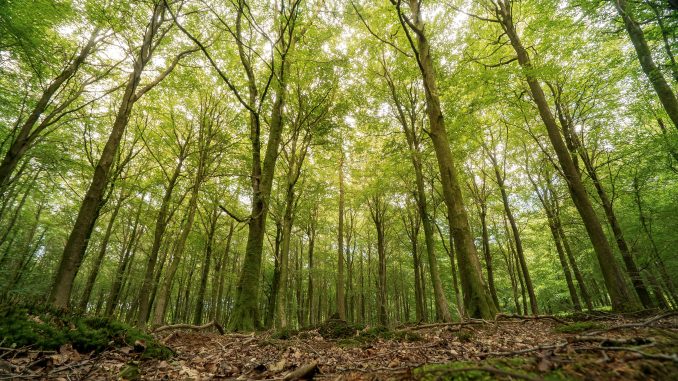
Did you know that in 2021/22 we have been planting more broadleaf trees than conifers in the UK (mainly in England)? Yet the timber that we are currently using for construction, packaging, fencing and lots of other products is mainly softwood. Of the hardwood we harvest, we burn 85% for energy production.
Sounds like we should find better ways of using these hardwoods? We thought so too! That’s why we just started a new 3-year project in partnership with the Centre for Advance Timber Technologies at the New Model Institute for Technology and Engineering (NMITE, who leads the project), Built Environment – Smarter Transformation (BE-ST), dRMM and Ecosystems Technologies. Get excited for Building from England’s Woodlands!
We will examine the suitability of certain species of English homegrown hardwoods for their use in construction, looking at sawn, engineered, and mass timber products including cross-laminated timber (CLT) and glue-laminated timber (glulam). At Edinburgh Napier University, we will be mostly looking into new strength grading approaches for home-grown hardwoods. The species will be chosen according to future availability, and timber potential based on existing data. The list includes more mainstream species such as oak, beech and sweet chestnut, as well as ones with less prior experience such as birch, sycamore, ash, alder and willow. Have a look at our species brief if you want to learn more.
If you have an opinion on which species would be most interesting for our research, please get in touch via email to D.Ridley-Ellis@napier.ac.uk or M.Cramer@napier.ac.uk.
The project is funded under the Forestry Commission’s Timber in Construction Innovation Fund.
Here is a description (from the press release) about the project as a whole:
A consortium of experts in timber construction and engineering is exploring ways to boost the use of English hardwood forest products across the built environment, in a move which could significantly improve the carbon footprint of the UK’s buildings and support diverse woodland ecosystems.
For the first time, researchers will examine the suitability of certain species of English homegrown trees for their use in construction, looking at sawn, engineered, and mass timber products including cross-laminated timber (CLT) and glue-laminated timber (glulam). The species will be chosen according to future availability, and timber potential based on existing data, including more common species such as oak, beech and sweet chestnut, as well as birch, sycamore, ash, alder and willow, where existing research about their suitability is limited.
Focussing on the use of timber in modern methods of construction, partners will collate data on the potential strength grading of each species while also assessing the use of homegrown co-products such as wood fibre insulation. The three-year project could help to reduce the UK’s reliance on imported construction materials, as well as providing low-carbon alternatives to concrete and steel.
Kat Scott, sustainability and regenerative design manager at dRMM, said: “By manufacturing viable and scalable homegrown timber alternatives to carbon-intensive materials, we are aiming to reduce the UK’s reliance on imported products. Widening the range of species that provide a domestic wood supply could also provide a boost for localised manufacturing facilities and supply chains.”
The research follows the success of the Innovate UK-funded Transforming Timber initiative which set out to prove the business case for using Scottish wood to create the structural elements of buildings. A demonstrator unit created using homegrown cross-laminated timber (CLT), nail-laminated timber (NLT) and glue-laminated timber (GLT) was found to have an estimated carbon sink of -142kg per m2, compared to +612 kg per m2for an equivalent brick and block construction.
Sam Hart, head of modern methods of construction at BE-ST, said: “As the UK faces a climate emergency, demand is growing rapidly for more sustainable construction approaches such as timber-based offsite design. By building a robust evidence base, we can inform future approaches to forestry and woodland management across England that includes the species best suited for use in the structure of buildings. At the same time, the trees will sequester significant amounts of carbon, helping to reduce the environmental impact of the built environment in the years to come.”
Professor Robert Hairstans, director of the Centre for Advance Timber Technologies at NMITE, added: “This research represents a strategic convergence of England’s forestry, manufacturing, and construction industries to drive the increased adoption of homegrown, renewable timber in construction. By so doing we can inform future forest strategies to ensure resilience against pests, diseases and climate change and be less reliant on imported resources and the current monoculture of commercial species.”

Leave a Reply
You must be logged in to post a comment.